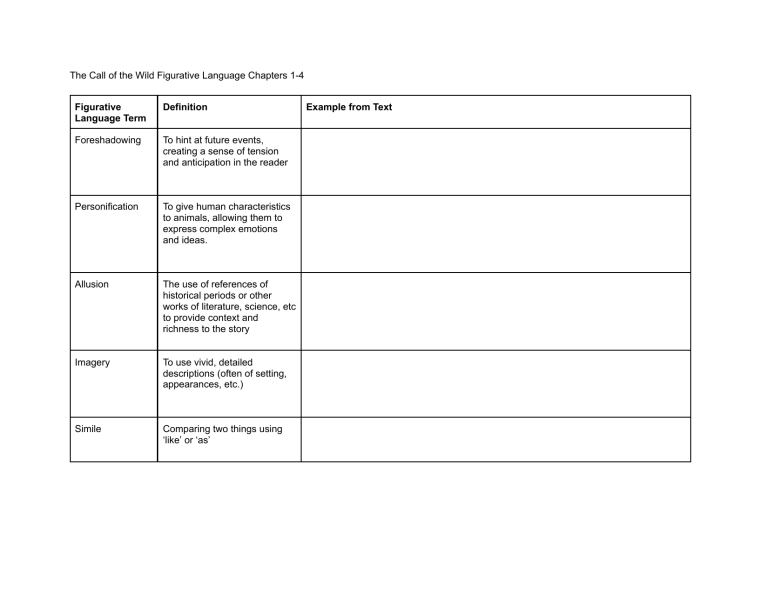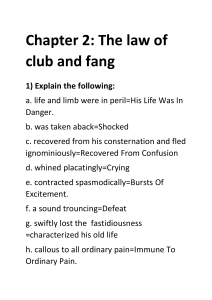
The Call of the Wild Figurative Language Chapters 1-4 Figurative Language Term Definition Foreshadowing To hint at future events, creating a sense of tension and anticipation in the reader Personification To give human characteristics to animals, allowing them to express complex emotions and ideas. Allusion The use of references of historical periods or other works of literature, science, etc to provide context and richness to the story Imagery To use vivid, detailed descriptions (often of setting, appearances, etc.) Simile Comparing two things using ‘like’ or ‘as’ Example from Text And this was the manner of dog Buck was in the fall of 1897, when the Klondike strike dragged men from all the world into the frozen North. For the moment he forgot Sandburg, and was lost in the feeling of mastery which the movement of the sled and the sharp-cutting swish of the runners under foot imparted to him. He learned to bite the ice out with his teeth when it collected between his toes; and when he was thirsty and there was a thick scum of ice over the water hole, he would break it by rearing and striking it with stiff fore legs. Buck did not read the newspapers, or he would have known that trouble was brewing, not alone for himself, but for every tide-water dog, strong of muscle and with warm, long hair, from Puget Sound to San Diego. Buck did not like it, but he bore up well to the work, taking pride in it after the manner of Dave and Sol-leks, and seeing that his mates, whether they prided in it or not, did their fair share. It was a monotonous life, operating with machine-like regularity. One day was very like another.





